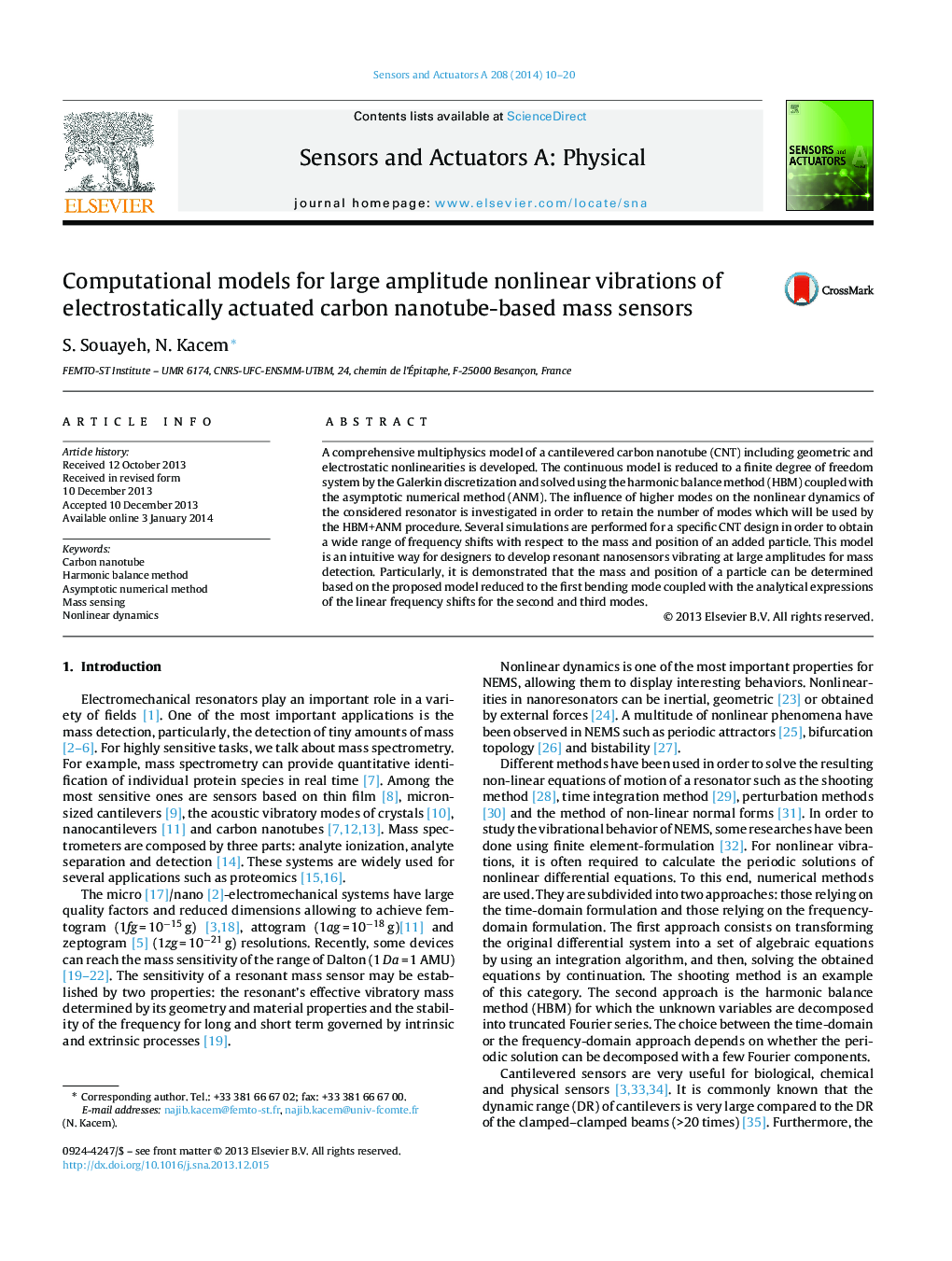| Article ID | Journal | Published Year | Pages | File Type |
|---|---|---|---|---|
| 739431 | Sensors and Actuators A: Physical | 2014 | 11 Pages |
•A model for nonlinear vibrations of a carbon nanotube resonator under electrostatic actuation is developed.•The nanotube design includes an electrode placed at a specific position in order to enlarge the device dynamic range.•For mass sensing applications, the number of modes which are used in the HBM+ANM procedure is investigated.•The frequency shifts for linear and nonlinear cases are compared and the necessity of using several modes is justified.•The mass and position of an added particle can be determined based on a hybrid analytical–numerical method.
A comprehensive multiphysics model of a cantilevered carbon nanotube (CNT) including geometric and electrostatic nonlinearities is developed. The continuous model is reduced to a finite degree of freedom system by the Galerkin discretization and solved using the harmonic balance method (HBM) coupled with the asymptotic numerical method (ANM). The influence of higher modes on the nonlinear dynamics of the considered resonator is investigated in order to retain the number of modes which will be used by the HBM+ANM procedure. Several simulations are performed for a specific CNT design in order to obtain a wide range of frequency shifts with respect to the mass and position of an added particle. This model is an intuitive way for designers to develop resonant nanosensors vibrating at large amplitudes for mass detection. Particularly, it is demonstrated that the mass and position of a particle can be determined based on the proposed model reduced to the first bending mode coupled with the analytical expressions of the linear frequency shifts for the second and third modes.
